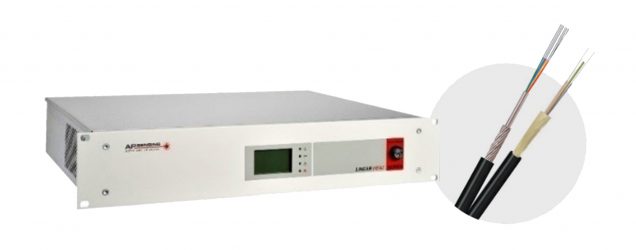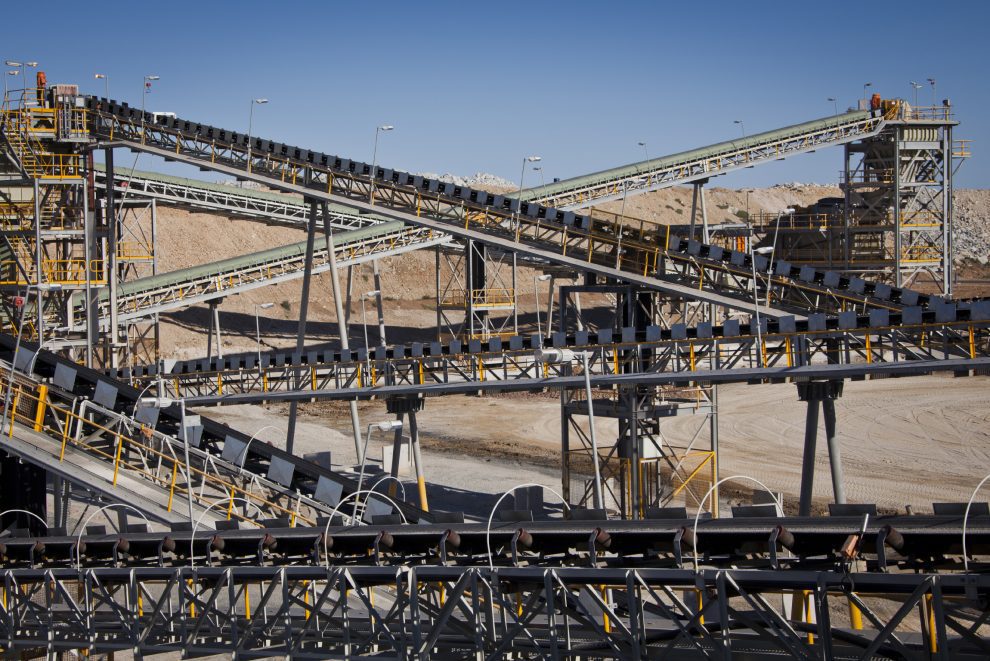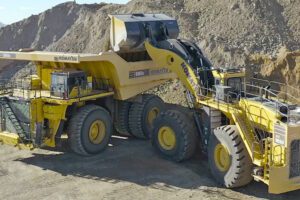Monitoring the potential for mining conveyor fires. Real time fire location and temperature of heat build-up is transforming the mining market.
Fire detection around a mine’s conveyor system has been difficult to achieve using conventional point heat detectors and smoke detector systems. This is mainly due to the typical conveyors’ long length and variable physical orientation such as inclines, high speed of operation and harsh operating environment. These traditional solutions are capital cost prohibitive and require regular maintenance. The result has been the poor performance of fire detection systems using these applications, and in some cases no fire detection at all.
What if you could now deploy a technology that addresses these challenges by providing precise location and actual temperature of any heat build-up in real time in a maintenance free system that is fully integrated to the site operational system? Distributed Temperature Sensing (DTS) technology uses a linear heat detector on a single fibre optic core to do that. Our system can detect heat at any point along a fibre cable to within half a metre and to half a degree accuracy.
The solution
Many mines in Australia are already using this technology and recently we completed commissioning of Glencore’s Bulga Coal Handling and Preparation Plant fire detection system on over 5 kilometres of conveyors. The system complies with all required coal industry regulations allowing the mine to not only fully protect conveyors at the mine site, but also meet its business risk assessment recommendations.
The DTS technology also provides early warning of abnormal heat build-up around operating equipment. When connected to the site SCADA system, this information can minimise the risk of potential serious consequences of equipment overheating, which could endanger personnel, damage the mine and machinery.
The system allows temperature monitoring, alarm setting and historical trends to be integrated into the plant’s SCADA system. The system’s objectives have been fully met which included:
- Conveyor fire detection coverage,
- Interface not only to the fire alarm system, but fully integrated with their existing site SCADA for:
- Early warning of abnormal heat build-up,
- Exact location of the abnormal heat or fire within a metre,
- Fire event management (i.e. evacuation, fire-fighting activities),
- Full history of the fire initiation point, its movement/spread, temperatures reached, with date and time stamping for the eventual reporting and investigation,
- Option for automatic activation of fire suppression systems,
- A maintenance-free fire detection system requiring no calibration and;
- A 24×7 fire detection and temperature monitoring system that increases safety for the protection of people and assets.
“Advanced Photonics supplied and commissioned a 5.0km Distributed Temperature System (DTS) around Bluga Coal’s CHPP conveyor system. The DTS collects real time temperature data every metre along its length, it then reports this temperature to the CHPP Citect control system. Any measured temperatures exceeding the alarm setting triggers a Citect warning alarm for immediate response to the exact hot spot location. The system provides a faster response time to any potential fire risk. It is performing well to expectation.”
Edward Kennedy / CHPP Projects – Bulga Open Cut / A GLENCORE Managed Operation
The DTS Components: the cable is the sensor
Distributed Temperature Sensing (DTS) technology uses a linear heat detector laser source through a single fibre optic core measuring 4 mm in diameter. It has been successfully tested and deployed in both surface and underground mines. The ruggedized fibre optic based system has the capacity to detect heat build-up quickly and localise the source to within 0.5 metres. This precision is unaffected by wind and other environmental effects, because not only convective, but also conductive and radiant (infrared) heat is detected by the cable.
The fibre optic cable is:
- Accredited for fire detection use (flame resistance 750°C for 2 hours, IEC 60331),
- Doesn’t propagate the flame along the cable (IEC60332-3),
- Can be installed in harsh environments (stainless steel cable sheath with high crush resistance),
- Is immune to EMI (electromagnetic interference),
- Requires no maintenance, after it is installed and
- The fibre cable is the sensor, no other cabling or field interface devices required.
This is all you need: a DTS unit and a fibre optics cable

The DTS system’s capabilities include:
- 24×7 remote temperature monitoring of the entire length, for total coverage,
- Provides not only the temperature but the actual location of the fire,
- It provides early warning of abnormal heat before a flame occurs,
- Interfaces to fire alarm panels & existing site HMI/SCADA systems,
- Safety Integrity Level SIL2 (IEC61508) for high reliability when asked to alarm and
- Available in 19” rack or IP66 external stainless-steel enclosures.
As a result of the technology application there is an overall increase on fire safety in the mine: protecting the staff and mining assets as well as minimising any disruptions to plant production.
PROFILE
Advanced Photonics Australia
Advanced Photonics Australia provides cutting-edge technology to safeguard your operations and people. The solutions can be applied to detect and prevent fires in mines, as well as other industry applications such as pipeline leakage detection, power cable and transmission line hotspot and load management. Contact Advanced Photonics Australia for more information. Our experienced team will provide the right support on each product application and answer any questions you might have.
Contact Advanced Photonics Australia via phone +61 480 268 855, email at enquiries@apapl.com.au, and visit our website www.apapl.com.au.















Add Comment